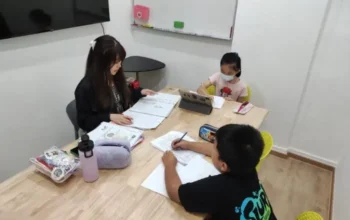The United States remains one of the most sought-after destinations for international students, offering a diverse range of programs, renowned institutions, and a vibrant academic culture. Every year, thousands of students from Malaysia set their sights on pursuing higher education in the U.S., drawn by its promise of innovation, research opportunities, and global exposure. However, the journey from Malaysia to a U.S. campus involves careful planning and a clear understanding of the process.
For those ready to take the leap, getting the right guidance is essential. If you’re planning to study in the United States, it’s important to understand the steps involved, from selecting the right university to obtaining a visa and settling into a new educational environment.
Choosing the Right Institution
The U.S. boasts over 4,000 colleges and universities, ranging from large public universities and Ivy League institutions to small liberal arts colleges and community colleges. Each institution offers its own set of strengths, course offerings, and campus cultures.
When selecting a school, consider the following:
- Academic focus: Does the institution offer strong programs in your chosen field?
- Location: Do you prefer an urban setting, a suburban campus, or a quieter rural environment?
- Cost and financial aid: What are the tuition fees, and are scholarships or financial aid available for international students?
- Student support: Are there services to help international students adjust academically and socially?
Doing thorough research on potential universities will help you find the best fit for your goals and personality.
Understanding Entry Requirements
U.S. universities evaluate applications based on academic performance, standardized test scores, extracurricular involvement, and personal essays. Common entry requirements include:
- Academic transcripts from your previous schools
- Standardized test scores such as SAT or ACT for undergraduate programs, and GRE or GMAT for postgraduate programs (requirements vary by university)
- English proficiency tests like TOEFL or IELTS
- Letters of recommendation from teachers or mentors
- Personal statement or essays that reflect your interests and goals
Each institution may have different requirements, so always check the official website of the university you’re applying to.
Application Timeline
Timing is critical when applying to U.S. institutions. Most universities have two major intakes: Fall (August/September) and Spring (January). Fall intake is the most popular and competitive. Here is a general timeline:
- 12–18 months before enrollment: Start researching universities and preparing for standardized tests.
- 9–12 months before enrollment: Begin the application process and request recommendation letters.
- 6–8 months before enrollment: Receive acceptance letters and decide where to enroll.
- 3–6 months before enrollment: Apply for your student visa and arrange housing.
Applying early and staying organized can reduce stress and improve your chances of success.
Applying for a Student Visa
Once accepted by a U.S. university, you’ll receive a Form I-20, which is necessary to apply for an F-1 student visa. Here’s how the process works:
- Pay the SEVIS fee.
- Schedule a visa interview at the U.S. Embassy or Consulate.
- Prepare your documentation, including the Form I-20, financial evidence, passport, and admission letter.
- Attend the visa interview, where you’ll be asked about your study plans and intentions to return home after graduation.
Visa approval depends on demonstrating strong academic intentions, financial capability, and ties to your home country.
Living in the United States
Adjusting to life in the U.S. may take time, but it is part of the enriching experience of studying abroad. You’ll encounter a diverse culture, interactive learning environments, and opportunities to participate in campus clubs, sports, and internships.
International students should also be aware of:
- Health insurance requirements
- Part-time work regulations under the F-1 visa (such as on-campus employment or CPT/OPT programs)
- Cultural differences and ways to adapt to academic expectations
Taking advantage of your school’s international student services can greatly ease the transition.
Opportunities After Graduation
One of the major benefits of studying in the U.S. is the potential for post-graduation work experience. Optional Practical Training (OPT) allows F-1 visa holders to work in their field of study for up to 12 months (or up to 36 months for STEM fields). This can be an excellent stepping stone to long-term career opportunities or further education.
Conclusion
For Malaysian students, the opportunity to study in the United States is not just about earning a degree—it’s about gaining global exposure, building networks, and acquiring life-changing skills. By researching institutions thoroughly, preparing for application requirements, and understanding visa processes, students can make the most of their academic journey in the U.S. With the right planning and support, your American education dream can become a reality.




